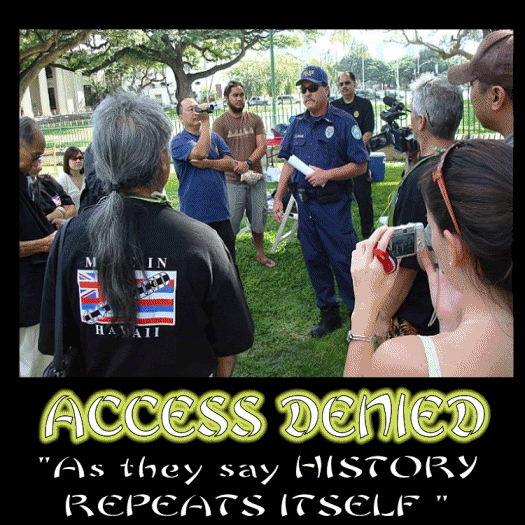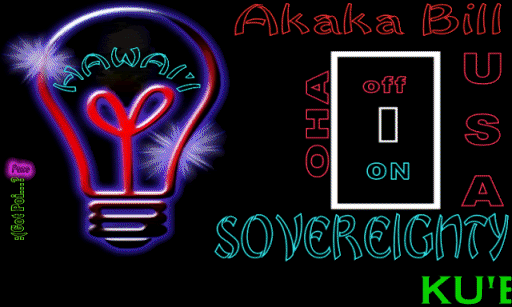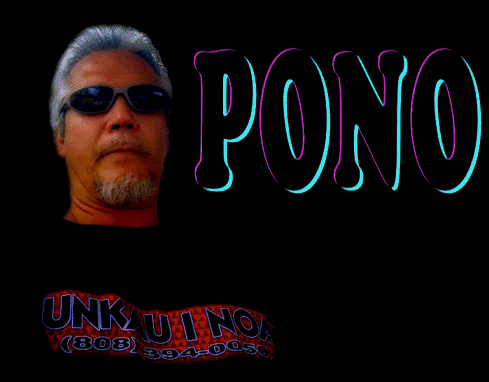All Posts (6434)
It is a video of Bishop Gene Robinson, an openly gay bishop, who spoke at the Lincoln Memorial at the inauguration kick off. Surprise surprise... HBO chose not show it allegedly due to Obama's team. However Sarah Pulliam found a way to show the truth. She shot that video for Christianity Today:http://blog.christianitytoday.com/ctpolitics/2009/01/gay_bishop_kick.htmlLatahs!

 January 19, 2009 Security high at 'Iolani Palace event Native Hawaiian groups tested the state's new rules governing 'Iolani Palace yesterday during their annual Sovereign Sunday event. No one was cited and no one was arrested, but more than 20 state Department of Land and Natural Resources enforcement officers were on hand to ensure that a group of Hawaiians followed the rules. The officers stood in a cluster while a variety of Hawaiian groups occupied the Diamond Head makai corner of the palace near the Pohukaina burial mound. Most were there to honor their culture and recognize the start of the January 1893 overthrow of the Hawaiian monarchy. One of the groups, Sacred Times and Sacred Places, comes to 'Iolani Palace each month to care for the burial mound. Officials removed three canopy tents erected by the groups, but did not touch the Hawaiian flags, information displays or chairs or tables that had been erected. "We tried to be culturally sensitive, but we have our jobs to do," said Guy Chink, a DLNR O'ahu Branch manager who led the enforcement team. "We will issue a citation to the owner of the tents and if no one claims ownership then the tents are considered found property." No one claimed the tents, and no citations were issued. But there was a lot of tension. "In the past 11 years no one in that time has stopped us," said Baron Chink, a member of the Sacred Times and Sacred Places organization. "We do the work here, not DLNR. As far as I'm concerned we are the authorized ones to enter, not the DLNR. We are not the interlopers here." The new rules were adopted after two takeover attempts were made last year by two separate groups. One takeover occurred in April and a second, in which the group entered the palace and the 'Iolani Barracks building, led to arrests in August. Both spurred the state Land Board to pass new rules governing the 11-acre grounds. The rules bar unauthorized occupation of the palace. The rules also spell out other prohibited activities on the palace grounds, including harassing palace workers or visitors and interfering with the public's use of the premises. Under the new rules, no more than 25 people are allowed to gather, no banners larger than a specific size can be erected and no tents are allowed on the grounds without permits. Overnight camping also is not allowed. The officers were on hand yesterday because of concern that there would be a large demonstration on the palace ground, said Kippen de Alba Chu, Friends of 'Iolani Palace director. "They did this earlier last week too for another sovereignty group who wanted to camp there the whole week," de Alba Chu said. "They are trying to be consistent with each group and they are there there to make sure the rules are adhered to." "This is still our place," said Lynette Cruz, a Hawaiian independence supporter. "Our job today is to remember who we are. We are not here to take over the palace, but to honor our heritage." |



